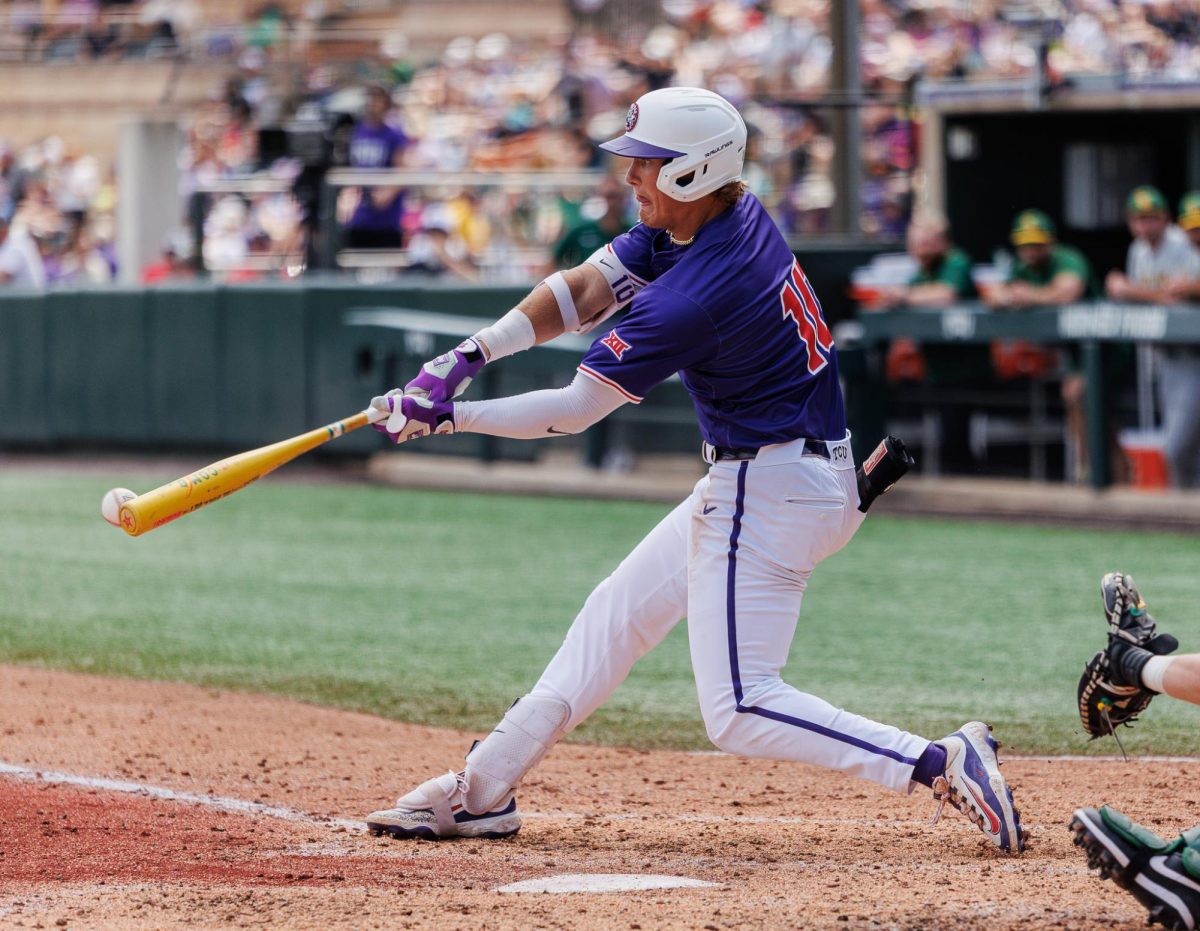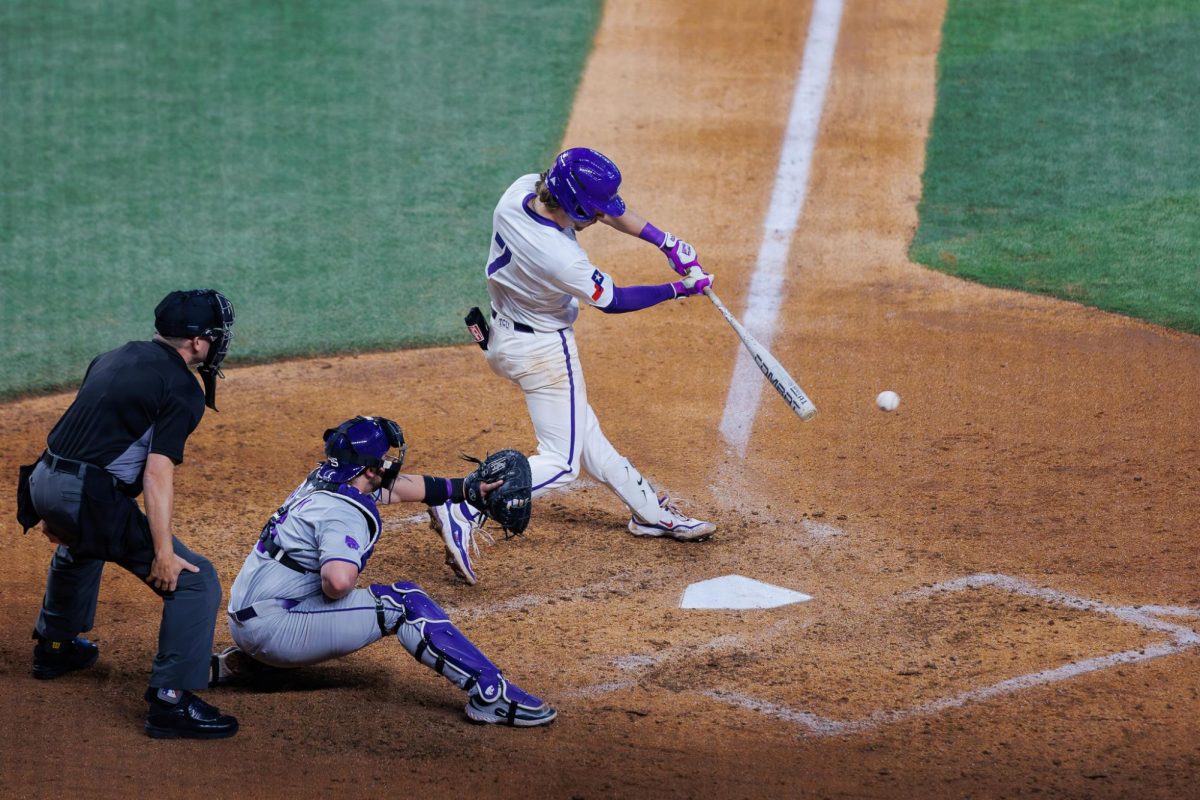Throughout the season, college baseball players and coaches have said new bat rules invoked by the NCAA have dampened the game by reducing home runs and shortening the game.
The NCAA conducted intense research to examine comparisons between this season and the past season to see whether the bats were holding offenses back. The research confirmed an assumption as a fact: Offensive slowdowns are evident across the entire league.
The NCAA's findings demonstrated that the overall batting average has dropped from .301 to .279 across the league, the pitchers' league earned run average dropped from 5.83 to 4.62 and shutout games jumped to 444, up from 277 at this time in the past season.
Additionally, college baseball teams are hitting half as many home runs and averaging a run less per game halfway through the season — hitting 0.47 home runs per game and scoring 5.63 runs compared to 0.85 home runs and 6.98 runs at a similar point this past season.
In the case of the No. 12 TCU Horned Frogs, their statistics are down as well. This past season, the Frogs had all but one starting player hit a minimum of .313. This year, TCU has returned all but two starters, but only four starters are hitting more than .300.
"We gotta find a way to swing the bat and win," TCU head coach Jim Schlossnagle said in March. "Whether we are using these bats or a newspaper, we gotta find a way to do it."
TCU had an average of 8.4 runs per game this past season. This season, TCU averages just more than six runs per game.
With these new statistics, the numbers show that the players have something right. It's not just a psychological issue. The new bats have dropped down the offensive impact of college baseball teams.
What remains to be seen is whether this change is a good thing for college baseball. From what has been seen so far, the changes seem to be something good for the sport.
The new metal bats are designed to perform more like wood bats. They have shrunken the sweet spots of the bats, which are designed to decrease the speed of the ball off the bat, meaning lower power numbers and less offensive glamour. While fans may not be seeing the power offensive performances they've been used to at the college level, keeping the offense in check speeds up games and restores integrity to the game.
If that wasn't enough, safety has definitely improved at the college level. The reduced speed makes the game safer for pitchers and infielders because the transfer of kinetic energy is slowed down when contact is made with the ball. Pitchers and infielders have a better chance to react, instead of being sitting ducks to the receiving end of an composite bat line drive.
With these new bats, the college game has begun to evolve to become like the professional game. Yet, with the ways the NCAA has implemented these new rules, college baseball is still unique. The ping of the bats, although at a different frequency, are still present at every ball game. As of now, it remains a good thing.
J.D. Moore is a freshman journalism major from Honolulu, Hawaii and a writer for SportDFW.com.



